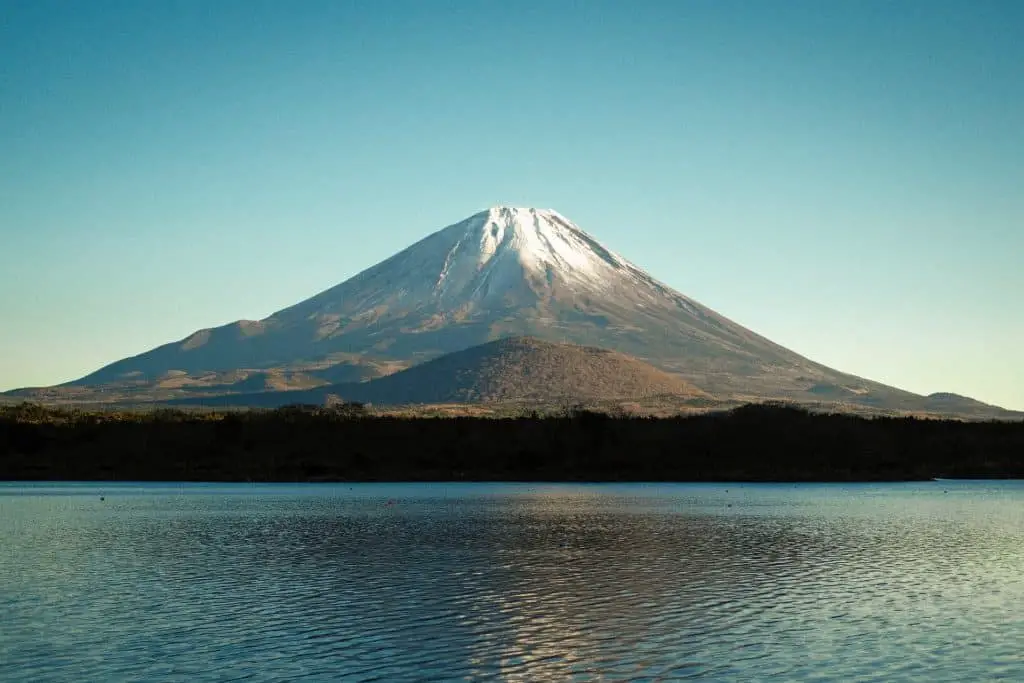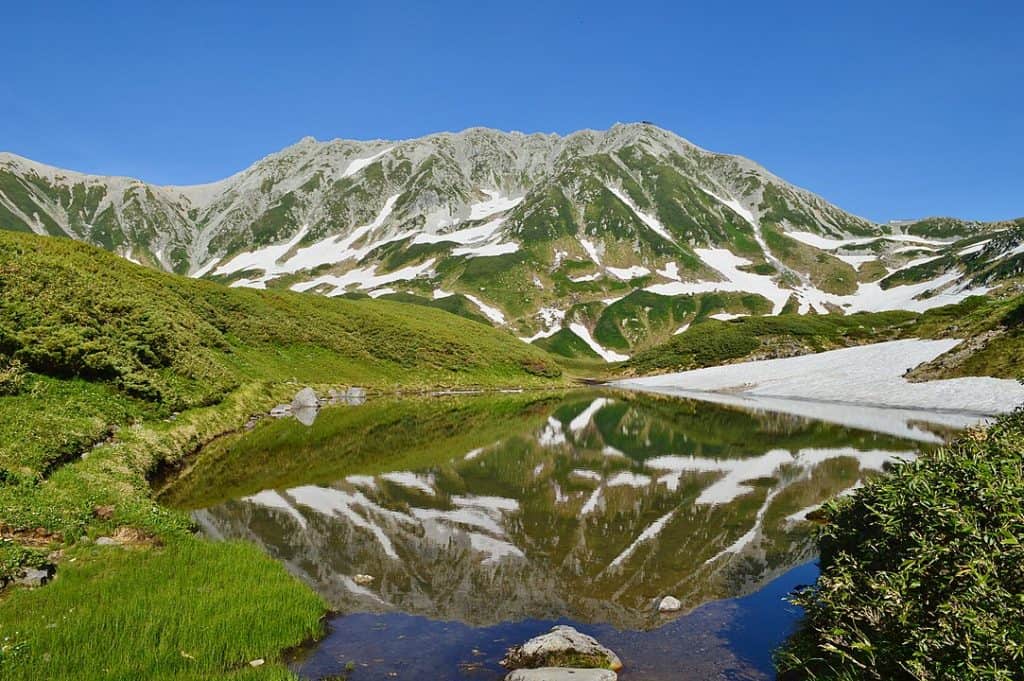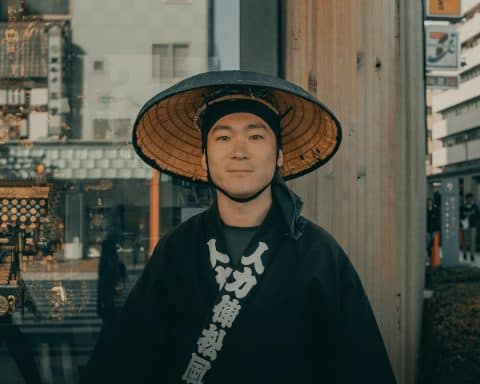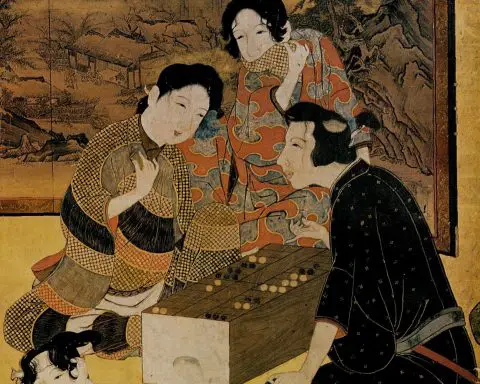Quite often I find myself pondering strange questions about Japan. In the past, that’s led me to find out why Japanese cars are so boxy, why Japan is so clean, and why it snows so much. But today, we’re going to find out just how many mountains there are in Japan.
In short, there are in between 16,667 and 18,032 mountains in Japan. The discrepancy between these two numbers depends on the classification used at the time. For example, the JAC (Japanese alpine club) suggests that there is 16,667 mountains but only classifies those listed on a 1/25,000 topological map.
In this article we are going to take a deep dive into Japans mountains including the countries smallest, largest, most famous, and best to visit on your holiday.
The tallest mountain in Japan
It should come as no surprise to most of you what the name of the tallest mountain in Japan is…

Standing at 3,776 metres tall (12,388 feet), Mount Fuji is bar far the tallest mountain in Japan.
Not only is Mount Fuji the tallest mountain in Japan, but this giant rock situated on the island of Honshū is also the second highest volcano on an island in Asia.
How does Mount Fuji stack up against the rest of the mountains in Japan?
As you can see from the table below, Mount Fuji is almost 600 metres higher than the second highest mountain in Japan, Mount Kita.
| Mountain | Height (Meters) |
| Mount Fuji | 3,776 |
| Mount Kita | 3,193 |
| Mount Okuhotaka | 3,190 |
| Mount Okuhotaka | 3,189 |
| Mount Aino | 3,180 |
| Mount Yari | 3,141 |
| Mount Warusawa | 3,120 |
| Mount Akaishi | 3,110 |
| Mount Karasawa | 3,106 |
| Mount Kitahotaka | 3,101 |
How big is Mount Fuji compared to other mountains in the world?
So you might be thinking that Mount Fuji is a damn big mountain, and relative to your local hill you’re probably right.
But comparing Fuji to the other mountains around the world, it’s nowhere close.
With some mountains in the world reaching over 8,000 metres (14 of them, to be exact), little old Mount Fuji doesn’t even make it into the top 100.
What is the smallest mountain in Japan?
We’ve just found out that the biggest mountain in Japan is Mount Fuji. Surprise surprise!
But what about the smallest mountain?
Well, once again that depends on how you classify a mountain vs a hill.
In this case we are going to be using the classification used by the Geospatial Information Authority of Japan.
It cites that the term ‘Mountain’ is used only when a level of elevation is shown on a topographic map published by the GSI.
So with that in mind, what is the smallest mountain in Japan?
Located in Minato-Ku, Osaka, standing at only 4.53 metres tall is Mount Tenpō.

Yep, you read that right, just over 4 and a half metres.
And that picture above? No word of a lie, that’s the summit.
So you might be asking yourself, why is Mount Tenpō so ridiculously small?
Let’s take a look at it’s history and find out exactly why that is.
The history of Mount Tenpō
As you can see from the photo above, Mount Tenpō is situated in front of a river called the Ajigawa.
In 1830, this river was the main river into the then capital of Japan, Osaka, and was in dire need of upgrading to accomodate bigger ships as well as to prevent flooding.
After piling up the earth from the dredged river, it amounted to a ‘Mountain’ the height of about 20 metres.
Fast forward to 1868, and the fall of the Tokugawa Shogunate. Part of the mountain had to be levelled to accomodate an artillery unit.
This levelling, continued industrialisation, and overuse of ground water made the mountain roughly the same height as it is today.
Unfortunately, this continued lowering led to the mountain being taken off of topographic maps thus removing it’s classification of ‘Mountain’.
However after protests by much of the local population, this was quickly reinstated and has remained that way ever since.
Three Holy Mountains – 三霊山
Japanese culture and tradition holds three mountains in extremely high esteem.
One of which you’ve heard of, but the other two you probably haven’t.
1. Mount Fuji

The first and probably most famous of the three holy mountains that has been worshipped for it’s entire existence.
It doesn’t seem like much of a stretch to understand why Mount Fuji is one of the the Three Holy Mountains.
Due to Mount Fuji being the tallest mountain in Japan, a pilgrimage up to the top will allow you to walk amongst the clouds and reflect on how small you are and how big the world really is.
It’s a great place not just for the stunning views, but also the inner reflection it allows you to achieve.
2. Mount Haku

Situated on the borders of Gifu and Ishikawa, Mount Haku (Hakusan) is one of Japans dormant volcanoes.
Mount Haku is also home to a shrine where people have come to for years for prayer (Hakusan Shinkō).
According to matcha.jp it’s also been worshipped as a god of water due to it being a source of the Kuzuryū, Tedori, and Nagara River.
3. Mount Tateyama

The third and final mountain from the holy trio is Mount Tateyama in Toyama prefecture.
This is a mountain that people worship as a place where spirits of the dead come back.
This is likely because many years ago, people believed the spirit of ones dead body would travel to the top of high mountains.
Does Japan have any mountain ranges?
It certainly does!
In the lower half of Honshu you’ll find the Japanese alps.
Encompassing over 36 mountains, the ‘Nihon Arupusu‘
Hida Mountains (Northern Alps)

Elevation: 3,190m
Prefectures: Niigata, Toyama, Nagano, Gifu
Fun Fact: Northern Alps in Japanese is ‘Kita Arupusu‘
The Hida Mountains is is the only mountain range in Japan to hold a glacier.
Three of them, in fact.
These small glaciers exist in Mount Tsurugi and Mount Tate.
Kiso Mountains (Central Alps)

Elevation: 2,956m
Prefectures: Gifu, Nagano
Fun fact: Central Alps in Japanese is ‘Chūō Arupusu‘
The highest peak in the Kiso Mountains is Mount Kyō sitting at 2,296.25 m.
The range also features four foothills called” Mount Nenjō, Mount Nagiso, Mount Kazakoshi (Kiso), and mount Kazakoshi (ena).
Akaishi Mountains (Southern Alps)

Elevation: 3,193m
Prefectures: Nagano, Yamanashi, Shizuoka
Fun Fact: Southern Alps in Japanese is ‘Minami Arupusu’
If you’re lucky to visit the Southern Japanese alps at the right time of year, you might just be able to spot some of the local wildlife including: Rock Ptarmigans, Sika Deer, and spotted nutcracker.
Let me know in the comments if you have any other questions about the Japanese mountains and I’ll do my best to answer them! ^_^








